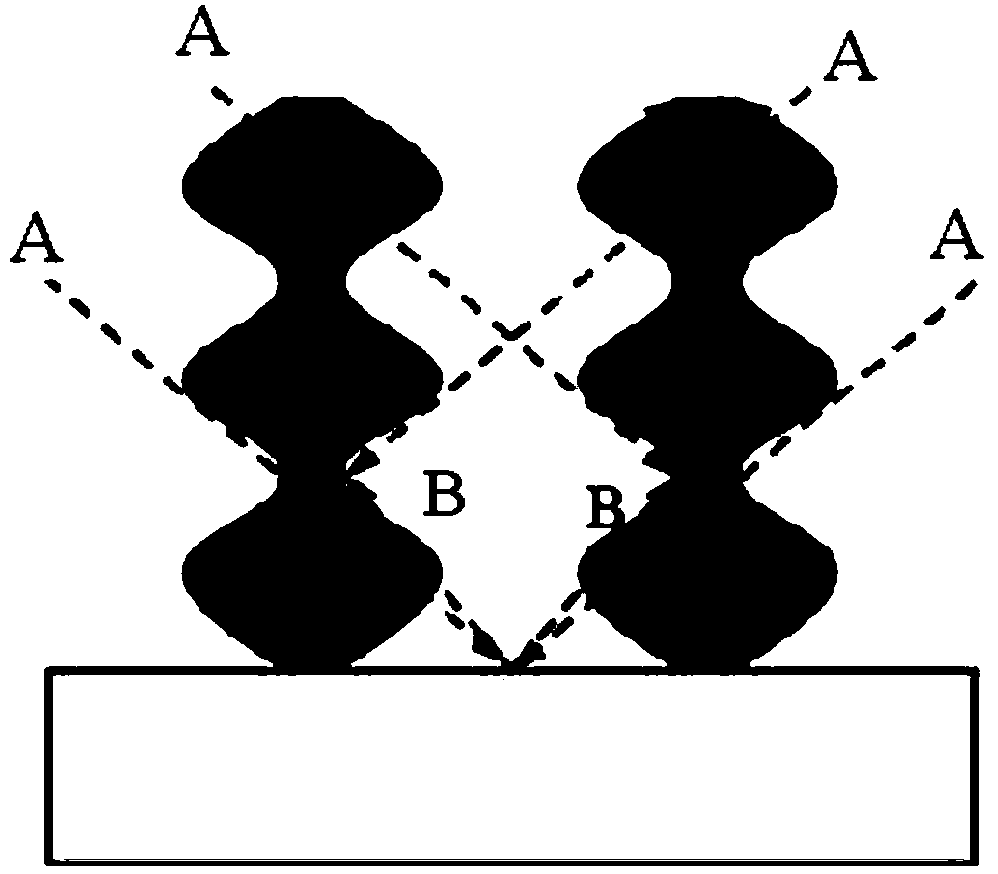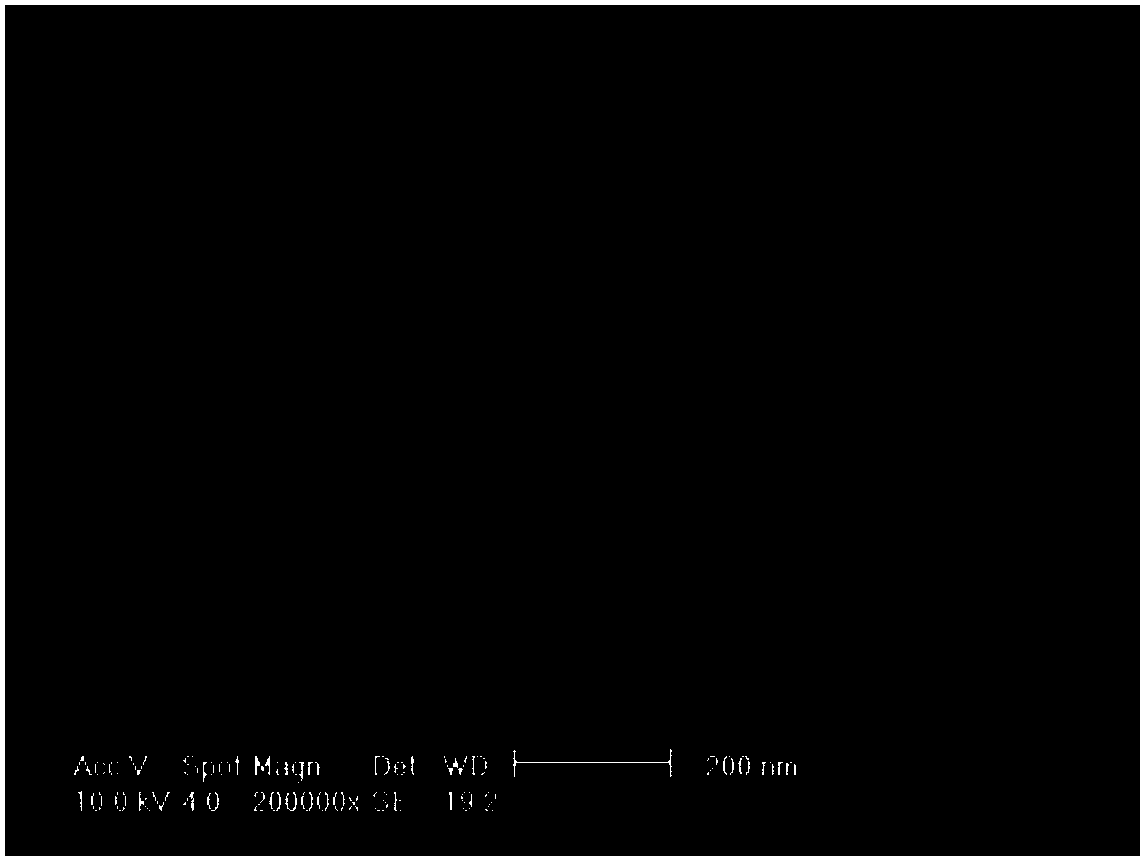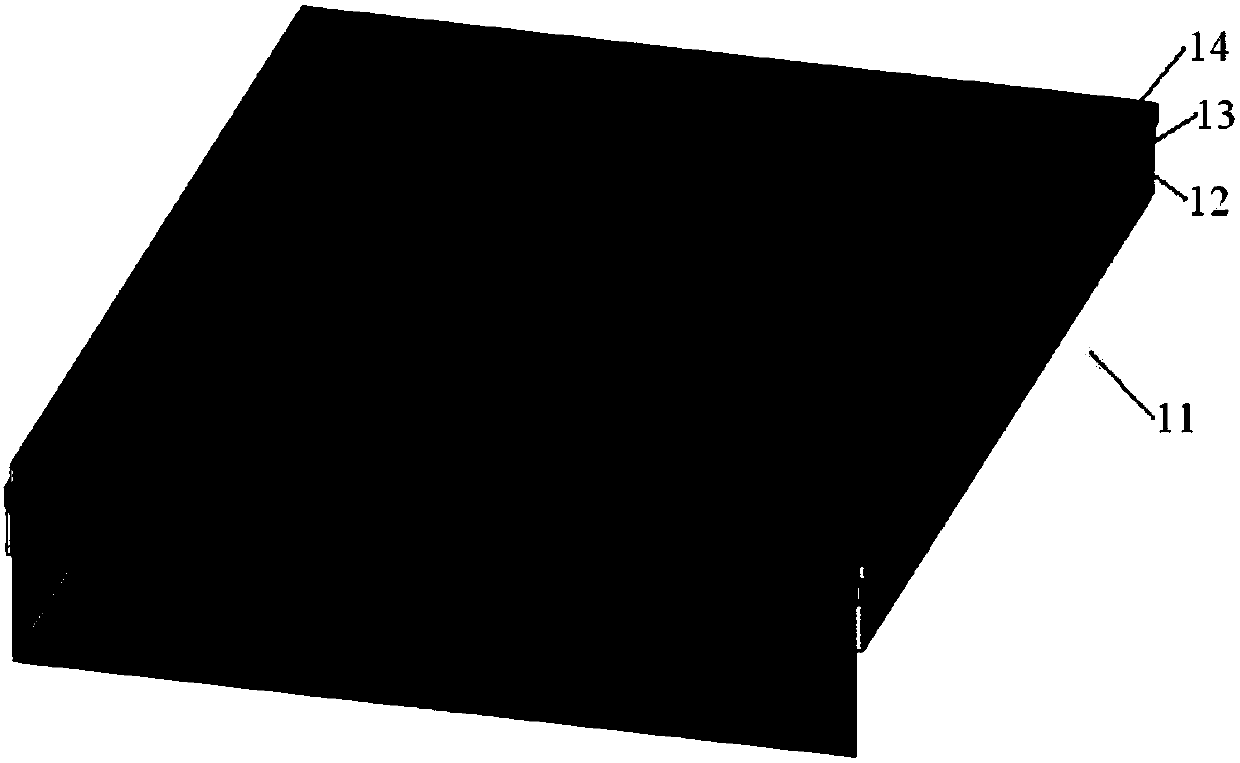Preparation method of photoresist pattern
A photoresist and photoresist layer technology, applied in the field of photolithography, can solve the problems of inability to obtain a periodic pattern structure, limit the general application of laser interference exposure technology, etc., and achieve a simple and practical preparation method, flat sidewalls, and low cost. Effect
- Summary
- Abstract
- Description
- Claims
- Application Information
AI Technical Summary
Problems solved by technology
Method used
Image
Examples
Embodiment 1
[0037] The silicon wafer substrate was cleaned with acetone, alcohol, and deionized water in sequence. AR-3840 photoresist was spin-coated on the silicon wafer substrate at a spinning speed of 4000r / min, and the photoresist was baked and cured to obtain a first photoresist layer with a thickness of 500 nm.
[0038] A gold intercalation layer with a thickness of 30 nm was deposited by electron beam evaporation on the first photoresist layer.
[0039] A diluted photoresist (AR-3840: deionized water volume ratio of 1:5) was spin-coated on the gold intercalation layer to obtain a second photoresist layer with a thickness of about 100 nm.
[0040] image 3 is a schematic diagram of the structure of a multilayer photoresist layer. like image 3 As shown, it includes a silicon substrate 11 , a first photoresist layer 12 , a gold intercalation layer 13 and a second photoresist layer 14 from bottom to top.
[0041] The second photoresist layer 14 is exposed once by using a double-b...
Embodiment 2
[0048] It is basically the same as Embodiment 1, except that the thickness of the first photoresist layer is 200 nanometers.
Embodiment 3
[0050] It is basically the same as Embodiment 1, except that the thickness of the first photoresist layer is 2 microns.
PUM
| Property | Measurement | Unit |
|---|---|---|
| thickness | aaaaa | aaaaa |
| thickness | aaaaa | aaaaa |
| thickness | aaaaa | aaaaa |
Abstract
Description
Claims
Application Information
 Login to View More
Login to View More - R&D
- Intellectual Property
- Life Sciences
- Materials
- Tech Scout
- Unparalleled Data Quality
- Higher Quality Content
- 60% Fewer Hallucinations
Browse by: Latest US Patents, China's latest patents, Technical Efficacy Thesaurus, Application Domain, Technology Topic, Popular Technical Reports.
© 2025 PatSnap. All rights reserved.Legal|Privacy policy|Modern Slavery Act Transparency Statement|Sitemap|About US| Contact US: help@patsnap.com



